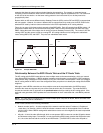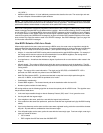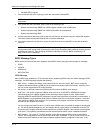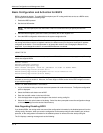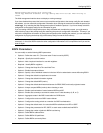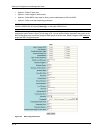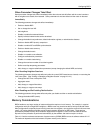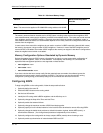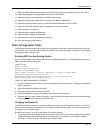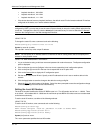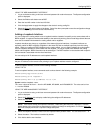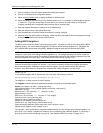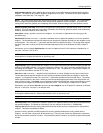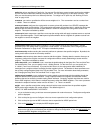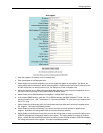
Advanced Configuration and Management Guide
Table 10.1: Maximum Memory Usage
Platform Maximum Memory BGP4
Can Use
Management module with 32 MB
Note: This amount also applies to HP 6308M-SX routing switches with 32 MB.
7 MB
Redundant Management module with 128 MB 62 MB
The memory amounts listed in the table are for all BGP4 data, including routes received from neighbors, BGP
route advertisements (routes sent to neighbors), and BGP route attribute entries. The routes sent to and received
from neighbors use the most BGP4 memory. Generally, the actual limit to the number of neighbors, routes, or
route attribute entries the device can accommodate depends on how many routes the routing switch sends to and
receives from the neighbors.
In some cases, where most of the neighbors do not send or receive a full BGP route table (about 80,000 routes),
the memory can support a larger number of BGP4 neighbors. However, if most of the BGP4 neighbors send or
receive full BGP route tables, the number of BGP neighbors the memory can support is less than in configurations
where the neighbors send smaller route tables.
Memory Configuration Options Obsoleted by Dynamic Memory
Devices that support dynamic BGP4 memory allocation do not require or even support static configuration of
memory for BGP4 neighbors, routes, or route attributes. Consequently, the following CLI commands and
equivalent Web management options are not supported on these devices:
• max-neighbors <num>
• max-routes <num>
• max-attribute-entries <num>
If you boot a device that has a startup-config file that contains these commands, the software ignores the
commands and uses dynamic memory allocation for BGP4. The first time you save the device’s running
configuration (running-config) to the startup-config file, the commands are removed from the file.
Configuring BGP4
To begin using BGP4 on the routing switch, follow the steps outlined below:
1. Optionally define the router ID.
2. Enable the BGP4 feature on the routing switch.
3. Set the local AS number.
4. Identify the HP routing switch’s BGP4 neighbors and the ASs they are in.
5. Optionally change the Keep Alive Time and Hold TIme.
6. Optionally enable fast external fallover.
7. Optionally change the maximum number of BGP4 load sharing paths.
8. Optionally specify a list of individual networks in the local AS to be advertised to remote ASs using BGP4.
9. Optionally change the default local preference, default information originate, default MED (metric), or
administrative distances. (You change these parameters independently of one another.)
10. Optionally configure the routing switch to always compare MEDs (metrics) when choosing a route.
11. Optionally enable synchronization of routes between BGP4 and IGP.
10 - 10



